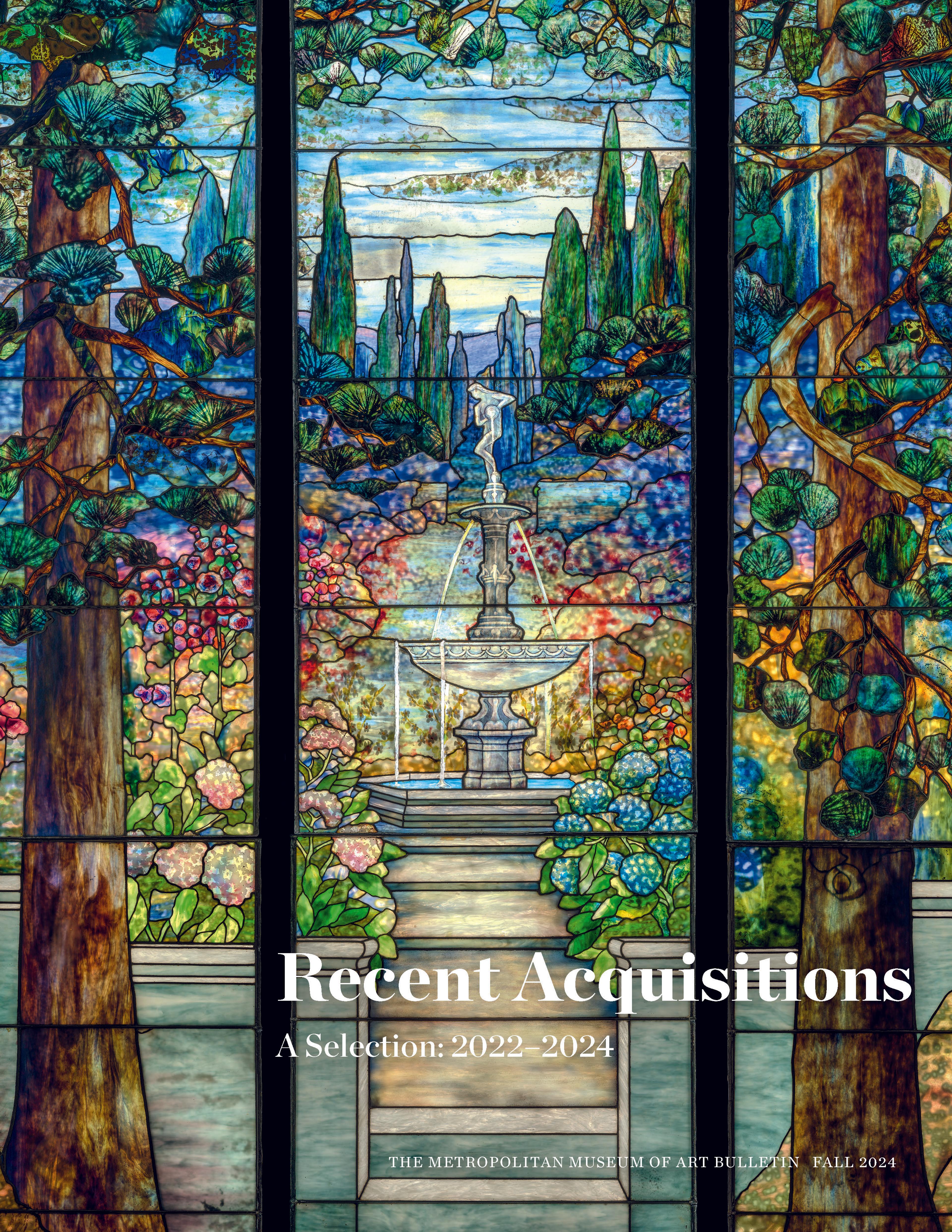Pair of tripod candlestands or torchères
The widespread success of Chippendale’s designs for mahogany ribbon-back chairs made in the second half of the eighteenth century along the East Coast of North America, might at times overshadow the fact that the famed furniture maker also excelled in the production of highly ornate and inventive gilt-wood Rococo furniture. [A1]This arresting pair of sculptural gilt-wood tripod candlestands or torchères illustrate Chippendale’s versatility. Their gutsy proportions and extraordinarily lively, naturalistic carving distinguish them as pieces of great individualism. The rendition of witty bearded monsters and rams’ heads framed by wooly curls and with slightly opened mouths (as if they were breathing) contrast with the formulaic decoration often observed in gilt-wood furniture of lesser quality.
The torchères once furnished the entrance hall of Denton Hall in the Borrow of Harrogate, Yorkshire – very near Chippendale’s native town of Otley – but are not believed to have been made specifically for the house. In the 1770s, Sir James Ibbetson, 1st Bt., replaced the old Denton Hall with a new, neo-classical building for which he employed the architect John Carr of York. Chippendale appears to have supplied furniture for the principal rooms of the new house sometime between 1776 and 1779, but not the torchères which are more likely to date to ca.1760.
The extremely high quality of the carving suggests that the torchères were made by Thomas Chippendale’s workshop in London, rather than by a third party following his designs. A drawing for the torchères is preserved at the Victoria & Albert Museum (acc. no. 2609). It was part of a group of drawings belonging to George Lock, son of Chippendale’s contemporary, the highly skilled carver, Matthias Lock (1710–1765). It remains unclear if Lock and Chippendale ever worked together, but the presence of multiple drawings by Chippendale in Lock’s personal collection, and of Lock’s drawings in Chippendale’s collection, hint at either a potential collaboration or at the very least at a mutual admiration. Given the supreme quality of the torchères’ carving, it is tantalizing to surmise that Matthias Lock may have been involved in their execution.
The torchères once furnished the entrance hall of Denton Hall in the Borrow of Harrogate, Yorkshire – very near Chippendale’s native town of Otley – but are not believed to have been made specifically for the house. In the 1770s, Sir James Ibbetson, 1st Bt., replaced the old Denton Hall with a new, neo-classical building for which he employed the architect John Carr of York. Chippendale appears to have supplied furniture for the principal rooms of the new house sometime between 1776 and 1779, but not the torchères which are more likely to date to ca.1760.
The extremely high quality of the carving suggests that the torchères were made by Thomas Chippendale’s workshop in London, rather than by a third party following his designs. A drawing for the torchères is preserved at the Victoria & Albert Museum (acc. no. 2609). It was part of a group of drawings belonging to George Lock, son of Chippendale’s contemporary, the highly skilled carver, Matthias Lock (1710–1765). It remains unclear if Lock and Chippendale ever worked together, but the presence of multiple drawings by Chippendale in Lock’s personal collection, and of Lock’s drawings in Chippendale’s collection, hint at either a potential collaboration or at the very least at a mutual admiration. Given the supreme quality of the torchères’ carving, it is tantalizing to surmise that Matthias Lock may have been involved in their execution.
Artwork Details
- Title: Pair of tripod candlestands or torchères
- Designer: Thomas Chippendale (British, baptised Otley, West Yorkshire 1718–1779 London) , after a manuscript design
- Date: ca. 1760
- Culture: British
- Medium: Carved and gilded wood (pine?)
- Dimensions: 54 × 25 × 25 in. (137.2 × 63.5 × 63.5 cm)
- Classification: Woodwork-Furniture
- Credit Line: Gift of Mrs. Irene Roosevelt Aitken, 2023
- Object Number: 2023.488.1, .2
- Curatorial Department: European Sculpture and Decorative Arts
More Artwork
Research Resources
The Met provides unparalleled resources for research and welcomes an international community of students and scholars. The Met's Open Access API is where creators and researchers can connect to the The Met collection. Open Access data and public domain images are available for unrestricted commercial and noncommercial use without permission or fee.
To request images under copyright and other restrictions, please use this Image Request form.
Feedback
We continue to research and examine historical and cultural context for objects in The Met collection. If you have comments or questions about this object record, please complete and submit this form. The Museum looks forward to receiving your comments.
